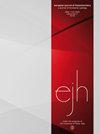小脑皮层的一种候选投射神经元类型:突触神经元
IF 2.1
4区 生物学
Q4 CELL BIOLOGY
引用次数: 0
摘要
以往对小脑皮质颗粒层的研究发现,颗粒层的三个不同区域广泛分布着不同亚群的鲜为人知的大型神经元类型,这些神经元类型被称为 "非传统大型神经元"。这些神经元类型主要参与小脑皮层内部固有电路的形成。这些神经元类型中的一个亚群以突触神经元为代表,突触神经元可在小脑回路中发挥投射作用。突触神经元细胞体映射在颗粒层内部区域或邻近的白色物质中。此外,轴突穿过颗粒层,在皮质下白色物质中运行,然后重新进入相邻的颗粒层,将同一叶或不同叶的两个皮质-小脑区域联系起来,也可以投射到小脑固有核。因此,与小脑皮层传统的投射神经元类型--浦肯野神经元(Purkinje neuron)一样,突触神经元(synarmotic neuron)也是代表小脑皮层第二种投射神经元类型的候选神经元。化学神经解剖学研究证明,突触神经元主要具有抑制性GABA能,这表明它可能在皮质与皮质的相互联系中或在向小脑固有核的投射中介导小脑皮质的抑制性GABA能输出。在此基础上,本综述主要关注突触神经元的形态功能和神经化学数据,并探讨其在某些形式的小脑共济失调中的潜在参与。本文章由计算机程序翻译,如有差异,请以英文原文为准。
A candidate projective neuron type of the cerebellar cortex: the synarmotic neuron
Previous studies on the granular layer of the cerebellar cortex have revealed a wide distribution of different subpopulations of less-known large neuron types, called “non-traditional large neurons”, which are distributed in three different zones of the granular layer. These neuron types are mainly involved in the formation of intrinsiccircuits inside the cerebellar cortex. A subpopulation of these neuron types is represented by the synarmotic neuron, which could play a projective role within the cerebellar circuitry. The synarmotic neuron cell body map within the internal zone of the granular layer or in the subjacent white substance. Furthermore, the axon crosses the granular layer and runs in the subcortical white substance, to reenter in an adjacent granular layer, associating two cortico-cerebellar regions of the same folium or of different folia, or could project to the intrinsic cerebellar nuclei. Therefore, along with the Purkinje neuron, the traditional projective neuron type of the cerebellar cortex, the synarmotic neuron is candidate to represent the second projective neuron type of the cerebellar cortex. Studies of chemical neuroanatomy evidenced a predominant inhibitory GABAergic nature of the synarmotic neuron, suggesting that it may mediate an inhibitory GABAergic output of cerebellar cortex within cortico-cortical interconnections or in projections towards intrinsic cerebellar nuclei. On this basis, the present minireview mainly focuses on the morphofunctional and neurochemical data of the synarmotic neuron, and explores its potential involvement in some forms of cerebellar ataxias.
求助全文
通过发布文献求助,成功后即可免费获取论文全文。
去求助
来源期刊

European Journal of Histochemistry
生物-细胞生物学
CiteScore
3.70
自引率
5.00%
发文量
47
审稿时长
3 months
期刊介绍:
The Journal publishes original papers concerning investigations by histochemical and immunohistochemical methods, and performed with the aid of light, super-resolution and electron microscopy, cytometry and imaging techniques. Coverage extends to:
functional cell and tissue biology in animals and plants;
cell differentiation and death;
cell-cell interaction and molecular trafficking;
biology of cell development and senescence;
nerve and muscle cell biology;
cellular basis of diseases.
The histochemical approach is nowadays essentially aimed at locating molecules in the very place where they exert their biological roles, and at describing dynamically specific chemical activities in living cells. Basic research on cell functional organization is essential for understanding the mechanisms underlying major biological processes such as differentiation, the control of tissue homeostasis, and the regulation of normal and tumor cell growth. Even more than in the past, the European Journal of Histochemistry, as a journal of functional cytology, represents the venue where cell scientists may present and discuss their original results, technical improvements and theories.
 求助内容:
求助内容: 应助结果提醒方式:
应助结果提醒方式:


